Elevate Your Garden with These 10 Tall Sedum Varieties
Looking for low-maintenance plants that can thrive without much care? Sedums are the answer. These stunning bloomers can go weeks without water and don’t need regular fertilization. With over 500 known species, mainly found in temperate regions of the Northern Hemisphere, sedums are native to East Asia.
With thick roots and fleshy, waxy, serrated leaves, upright sedum varieties reach an impressive height of 12-24 inches. Whether planted in the ground or in pots, these hardy perennials are adaptable. Even in winter, their flower stems remain firm, creating a captivating display, particularly with frost or snow.
In this blog post, we’ll explore 10 fascinating tall sedum varieties for your garden. Each variety has its own unique care needs. Get ready to discover the perfect low-maintenance additions that will bring charm to your garden with minimal effort required.
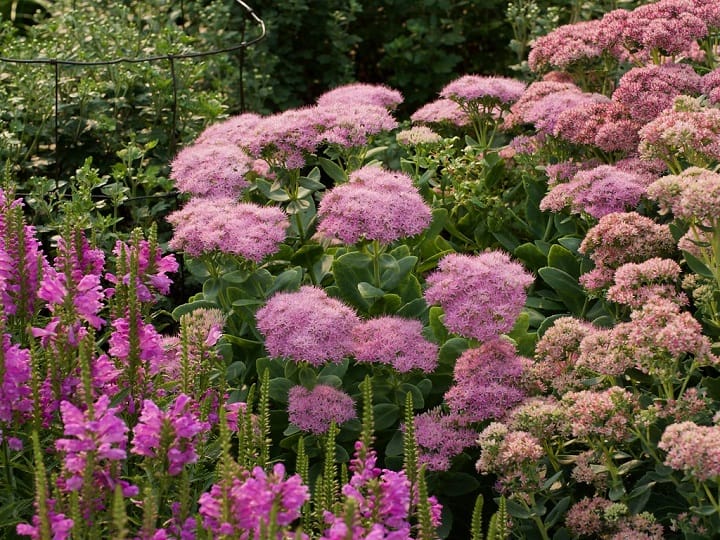
Tall Sedum Varieties
Sedum telephium ‘Herbstfreude’
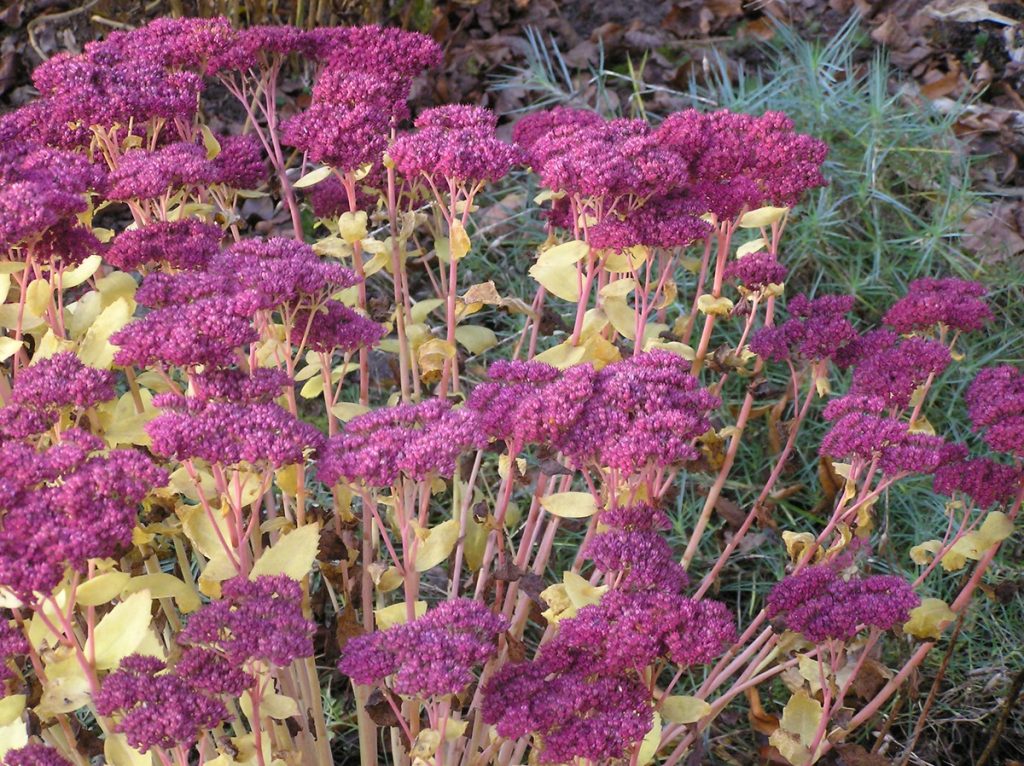
- Height: 12-24 inches
- Flowering period: July to September
- Flower color: Old pink to purple tones
- Leaf color: Gray-green, turning yellowish in autumn
- Inflorescence color (variety): Brown-red
Sedum telephium is a beautiful tall sedum variety that grows to a height of 12-24 inches. It blooms from July to September, displaying enchanting old pink to purple tones. The plant’s gray-green leaves add a touch of elegance to the garden and turn yellowish in autumn, creating a warm ambiance. One popular variety of Sedum telephium is ‘Herbstfreude,’ which features brown-red inflorescences that add a unique flair to the overall aesthetic.
Sedum spectabile
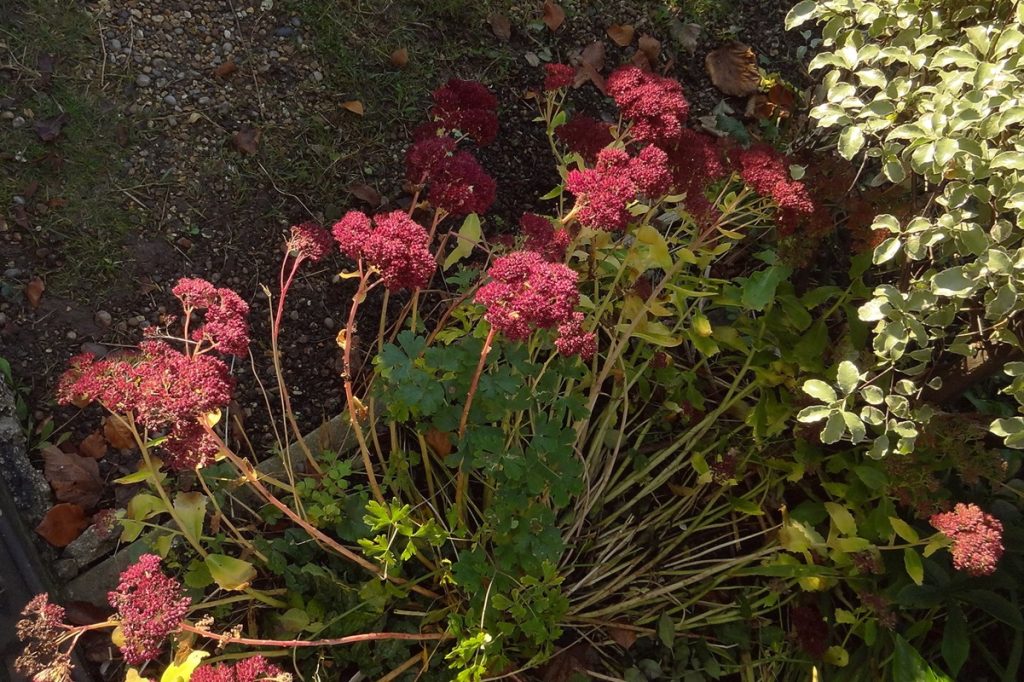
- Height: 20 inches
- Flowering period: August to September
- Flower color (varieties): Predominantly crimson red
- Varieties:
- ‘Rose Counter’: Height of 12 inches, smaller in size
- ‘Brilliant’, ‘Carmen’, ‘Meteor’: Height of 16 inches
- ‘Septemberglut’: Dark red inflorescences on 20-inch high stems
Sedum spectabile is another popular tall sedum variety known for its stunning display. It reaches a height of 20 inches and blooms from August to September. Sedum spectabile has several varieties that predominantly bloom in crimson red, adding a vibrant splash of color to any garden. For those looking for a slightly smaller variety, ‘Rose Counter’ is an excellent choice, as it remains around 12 inches in height. Other varieties, such as ‘Brilliant,’ ‘Carmen,’ and ‘Meteor,’ can reach a height of 16 inches. If you prefer dark red inflorescences, ‘Septemberglut’ is the perfect option, with its striking appearance on 20-inch high stems.
Sedum aizoon
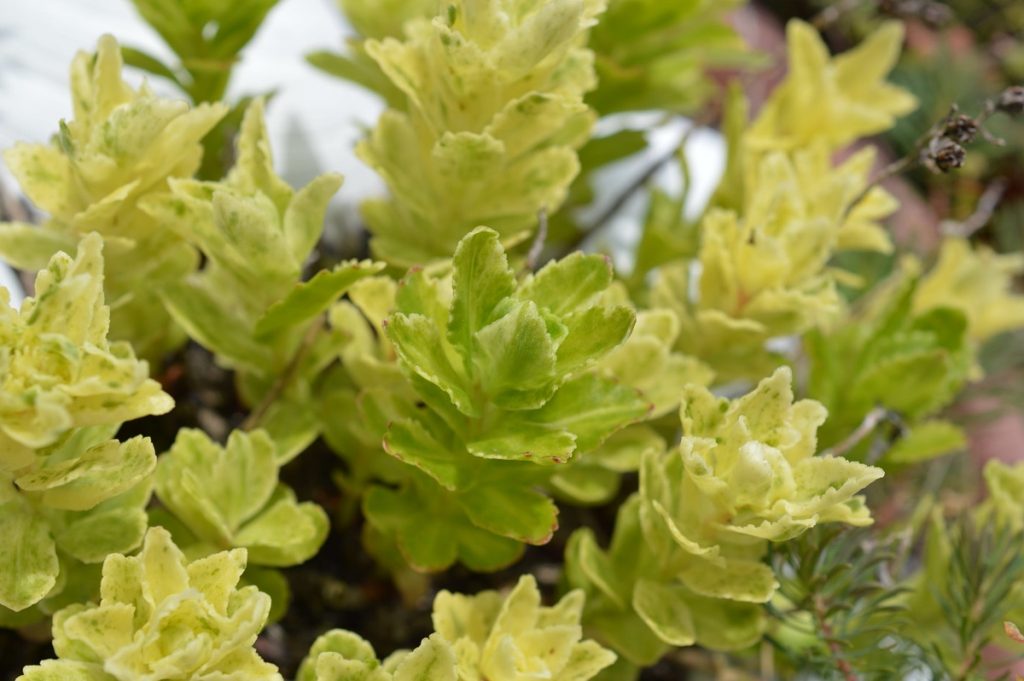
- Height: 20-32 inches
- Flower color: Pure yellow
- Flowering period: July to August
- Growth habit: Branching with upright shoots
Sedum aizoon is a tall sedum variety that captivates with its vibrant pure yellow flowers. It grows to a height of 20-32 inches and boasts a branching growth habit with upright shoots. The bright yellow blooms of Sedum aizoon create a cheerful and inviting atmosphere in the garden. Its vertical growth pattern adds a sense of structure, making it an eye-catching addition to any landscape.
Sedum alboroseum ‘Mediovariegatum’
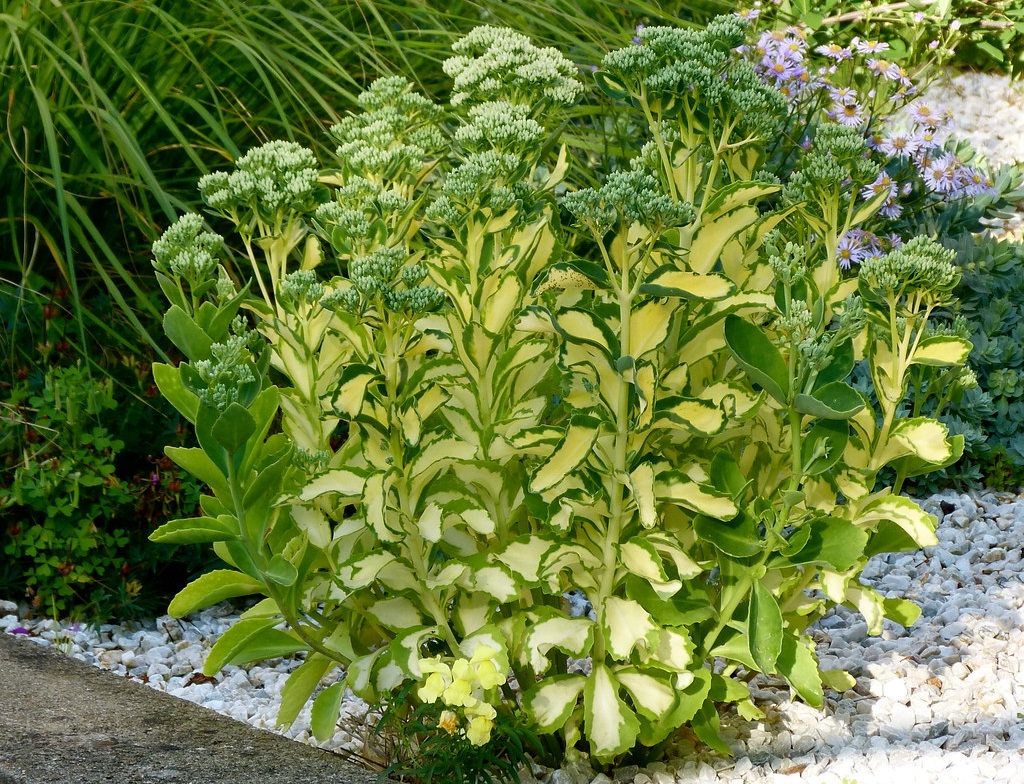
- Height: 16-20 inches
- Flowering period: September
- Flower color: Pinkish white to pink
- Leaf color: Yellow and green spotted
Sedum alboroseum ‘Mediovariegatum’ is an enthusiast’s dream plant. Its delicate flowers bloom in shades ranging from pinkish-white to pink during September. However, it’s not just the flowers that steal the show. The leaves of this sedum variety truly stand out with their attractive yellow and green spots, adding a unique touch to the overall appearance. With a height of 16-20 inches, Sedum alboroseum ‘Mediovariegatum’ is a versatile choice that complements various garden styles and brings a touch of elegance wherever it grows.
These are just a few examples of the diverse and captivating tall sedum varieties available to enhance your garden. Each variety offers unique characteristics that contribute to the overall beauty and allure of these resilient plants. By incorporating these tall sedums into your garden, you’ll enjoy their stunning flowers, attractive foliage, and low-maintenance nature throughout the growing season.
Planting Sedums: Easy and Fun!
When it comes to planting sedums, follow these simple steps and have a blast in your garden!
Step 1: Spring Shopping Spree
In spring, look for young sedum plants in cute little pots. Choose compact ones with sturdy green leaves. They’re like your plant partners in crime!
Step 2: Sunny Spot
Sedums love the sun, so find a warm and sunny spot in your garden where they can soak up those rays. They deserve their moment in the spotlight!
Step 3: Planting Adventure
Dig a hole in the loosened soil and gently place your tall sedum plants. These guys can handle all kinds of soils, but they do appreciate a bit of calcium richness. Mix in some compost and complete fertilizer for a perfect blend.
Step 4: Versatile and Cool
Tall sedums are versatile plants that can adapt to different conditions. Just make sure the soil drains well. They can join the party in box plantings, border plantings, accents in rock gardens, or even stacked on walls. Talk about being the life of the garden!
Step 5: Density Matters
Plant about 8 sedum plants per square meter. It’s like having a gathering of fun plant friends, all enjoying the same space and creating a delightful atmosphere.
Upkeep and Fun Times!
Caring for sedums is a piece of cake, and it’s all fun and games! Here’s how you can keep the good times rolling with your plant pals.
When it comes to quenching their thirst, sedums are like rockstars in handling dry spells. But if you want them to bloom even more beautifully, give them a regular drink. Think of it as their refreshing happy hour! During dry periods, make it a weekly watering party. Cheers to hydrated sedums!
In the fall, it’s time for a little plant makeover adventure. You can divide your sedum plants and create new groups of green friends. It’s like throwing a plant party! Leave the wilted inflorescences behind—they add a touch of winter charm to your garden. Let them strut their stuff!
Spring is all about growth and new beginnings, and sedums don’t miss out on the fun. In fact, it’s the perfect time for multiplication! You can expand your sedum family by dividing them in the spring. It’s like the plants are having a joyful family reunion! More sedums mean more beauty and more fun in your garden.
With these simple tips, caring for your sedums becomes a breeze. So dive into the fun and enjoy the vibrant, resilient beauty that these plants bring to your garden!
Tall sedum varieties are not very susceptible to diseases caused by pathogens. If the leaves turn yellowish or red on the edge and show brown spots on the underside, infestation by foliar nematodes may be the cause.
